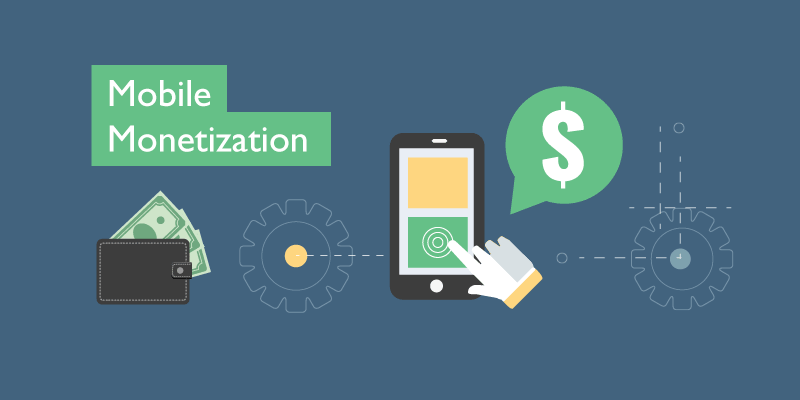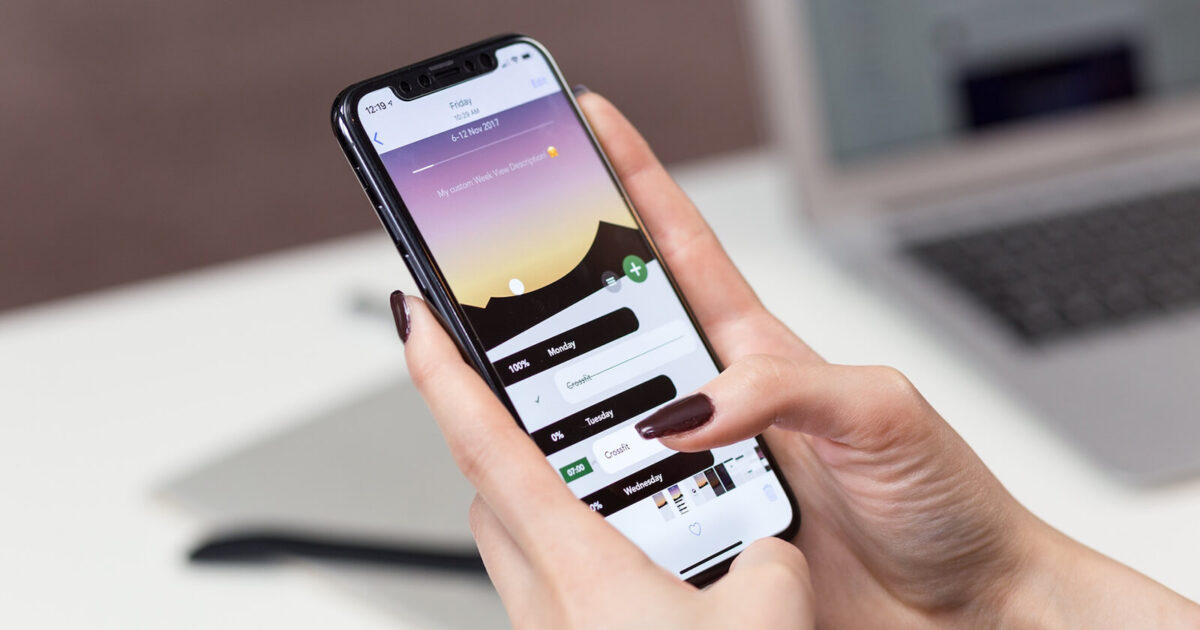The current development of the world market led to a constant increase in mobile app monetization. On average, smartphone owners spend a month in a year on mobile applications. According to Statista, consumers will download 352.9 billion mobile apps worldwide by 2021.
As App Annie forecast shows, people will spend in app stores more than 100 billion USD in 2018. And by 2022 the figure will be 156.5 billion USD.
But there is one thing. According to recent research, four-fifths of all mobile applications cannot withstand competition and fail at the launch stage. But startup owners continue to develop apps that don’t attract user attention. As a result, these apps can’t make money.
Apparently, even with the best scenario an application rarely brings immediate profit. Financial success depends on app popularity among the target audience. Adequately selected app monetization strategies and distribution channels play here the principal roles.
In this article, you’ll find all the necessary information about which monetization strategies and distribution channels to choose so that your app starts generating revenue.
Distribution Channels
![]()
To launch a successful advertising campaign, you must choose appropriate distribution channels. Building awareness of your product depends on the following:
Mobile App Landing Page
A great designed landing page allows your mobile app to stand out from competitors. It works effectively for increasing brand recognition and gives an extra number of downloads. A landing page created before launching an app allows you to verify the audience involvement before the product is released. But don’t forget about landing page during the app release. Do not forget about the page at a startup. This will help to run an advertising campaign and offer users to install apps. In the future, a landing page allows you to hold audience attention and provide specific information, which is missing in the app stores description.
Mobile App as a Distribution Channel
When your mobile app acts as a distribution channel, you improve user ratings and app sharing. To boost app ratings, your actions shouldn’t bother users when asking them to rate and review a product. And all the crucial bugs should be fixed in advance.
Relatives or Friends
Engaging your relatives or friends in downloading a mobile app, using it, and giving positive feedback is a win-win option. This is the cheapest and guaranteed way to get the desired result.
Relevant and Valuable Content Marketing
To build long-term, trusting and fruitful relationships with mobile app users, you need to create relevant content. It must be engaging, fresh, educational and useful. In-app content answers your audience’s questions. Keep in mind to give enough relevant information but don’t disclose everything to potential customers. As a result, you’ll increase app rating in store ranks and position in organic search results.
App Stores
App stores are considered the most popular distribution channels. Mobile apps are mainly available through app stores which are native distribution platforms. The largest ones are the App Store and Google Play Market. But there are created many other third-party alternative platforms where you can download applications. Such apps as GetJar, TweakBox, TutuApp, Aptoide, Cydia app manager, Baidu, Amazon Appstore are only a part of hundreds of app stores.
ASO
ASO (App store optimization) is a crucial distribution channel to convince users to download your app. It allows optimizing metadata to improve app metrics, app discovery and visibility in app stores search results. To be highly ranked in app stores, you must use specific titles, keywords, videos, screenshots.
ASO isn’t only about content. Pay attention to your app page rate. It depends on the number of downloads of your application. Positive feedback from users is also critical for achieving the best-rated positions.
Get Your App Featured in App Stores
Get your app featured in app stores is like winning a lottery. People start searching for apps from featured lists. There is a real fight for a spot on featured pages. To outpace competitors, your mobile app must be well promoted, high-quality, bug-free and continuously updated. It should meet technical requirements, have creative UX/UI design and be Apple/Android friendly. To increase the chances of success, create a convincing pitch to app stores curators.
Mobile First Indexing
Two-thirds of the world's population uses mobile devices. Mobile users dictate new rules for making the web more accessible and more comfortable. Google reacted to this trend and implemented mobile first indexing. This strategy means that search results will be generated and ranked according to the mobile version of the content, even if the users see the results from desktop devices.
Mobile App Advertising
With mobile app ads, you become close to users in the best possible way, because they see advertising directly on their screens. Ads allow receiving the desired results immediately, attracting the audience’s attention and increasing profits. With the right advertising, your app gets a warm audience from the search, media, and social networks. There are different ad channels. Social media platforms include Facebook Ads, Twitter Ads, Ads on Instagram, LinkedIn Ads, etc. Besides traditional Google AdWords and Google AdSense, ad networks contain a vast amount of alternatives such as YouTube Advertising, Applovin, Exponential, Taboola, etc. According to Statista, 36% of worldwide profits from the ad of non-game apps were received through video advertising in 2017.
Social Media Marketing Strategy
This strategy allows interacting with an audience. Use only fresh, engaging, and useful content. Build an active publishing schedule. Don’t overdo with hashtags. Make constant research and analysis. In this case, social media become a great distribution channel.
Email Marketing Campaign
Email marketing is the most accessible and useful tool for attracting and returning the audience. Running a proper email marketing and using contacts database, helps to significantly increase the number of repeat sales and the level of users involvement.
The Power of PR
Another useful step to generate buzz around your brand is to get reviews from PR leaders during app launch. Contact top PR consultants, bloggers, influencers, and other media representatives in the required app category. Don’t forget about giving bloggers access to a mobile app, so that they first use your platform, and then promote it, and publish reviews. Followers will like posts, comment them and share information about your product. As a result, an app will be known far beyond the target market.
Giveaways to Promote Your App
Get more users with giveaways. Reward your audience with discounts, limited free stuff, some services, or extra features. These loyalty programs allow increasing subscriptions, sales, and app downloads.
Description of Monetization Strategiess

Monetization strategies should be created long before the app release—at the start of the development stage. Which monetization models you choose depends on a target audience, its needs, requirements, age, interests, and solvency. Find out if your users are ready to spend money on paid services. Sales geography is also one of the critical factors. Keep in mind that the app theme must necessarily be combined with advertising. Here are the key strategies which will help you to bring profit.
Trial Version
A trial version is considered a famous model, increasing sales of a mobile platform manifold. It means free access to a paid app and features for a limited period of time—mainly from 7 to 30 days. A trial version allows your target audience to fall in love with an app at first sight and give positive feedback. After the end of the period, users choose whether to buy a product or not.
Subscription
A paid subscription allows users to get access to some premium features, materials, or events. To make users pay for membership and continuously hold their attention, you should provide relevant and engaging content. Send subscribers specific publications, newsletters, reports, and white papers. Share your experience via guides or courses. Offer some discounts or coupons to particular members. All these options will motivate users to visit your app more often.
SMS and Email Marketing
Text messaging and emailing are excellent sources to create a compelling call to action. Make in-depth research and analysis of users contacts and available information on social media. Using this data, send relevant messages to target users and share information about services and products, new features, events, and loyalty programs.
Affiliate Programs
Affiliate deals bring profit via cooperation with other businesses. With this monetization strategy, you allow other startups to promote their products and place some ads in your app. As a result, they generate new leads for their business and thus bring profit to your platform.
Apply for Sponsorship
This model means a partnership with sponsors. You encourage users for specific activities offered by app advertisers. When users complete new levels or achieve goals, they get real valuable rewards from sponsors—some bonuses, discounts, or services. Sponsorship is a great way to hold users attention and keep them engaged with your app. All the profits from the support you share with advertisers. The critical problem is to find sponsors with a similar target niche.
Freemium Strategy
The freemium strategy offers users to download an app for free with essential features. This model helps to build trustful relationships with a target audience. After trying a free product, users decide if they want to upgrade an app from light version to premium. But additional premium features cost money.
Paid App Download
This monetization strategy means that a user pays once per an app download. The bigger the audience you have, the more profit you get. The critical task here is to engage people in buying your product. To succeed, you need to stand out from competitors with tech solutions, unique features, and valuable content. Run a robust promotional campaign and keep a marketing strategy relevant.
Paymium Model
The paymium model consists of paid app download and a freemium strategy—an audience buys a paid app, but essential features cost nothing. For an additional cost, people can add advanced premium functions. It's not easy to manage this model. As with paid purchase, your product should guarantee users a unique experience and a technical background.
Partnership with Other Apps
You can monetize your app through promotion within other apps which have a similar target audience. Such cooperation is mutually beneficial and increases profits manifold. First, it’s an excellent opportunity to integrate your products into the partner app. Secondly, such partnership helps to create more valuable products with collective effort. Thirdly, this model increases the audience's loyalty and positive feedbacks. Choose not only top rated apps to collaborate with, but also platforms with average ratings.
In-App Shopping
This strategy offers users to pay for some valuable goods, services, and features within your app. To get customers to purchase more, provide qualitative stuff that meets user needs.
In-App Advertising
According to Statista, in-app advertising will bring 66 billion USD worldwide revenue in 2020. Native ads, notifications, reward-based mobile ads, banner ads, and pop-up ads are the most commonly used types of in-app commerce.
White Label Solution
You can offer your app as a white label solution for other companies seeking to launch or re-invent their platforms. With this partnership strategy, you develop an app and then resell it to other businesses under a different brand name.
Multitenant platform
You can create a mobile app as a base for a multitenant platform. It means that you can license your product to customers, so an app brings more profit. Some updates, releases of new versions, or fixing bugs may stop work of other tenants for a while. So, make sure that your service is of high quality, secure, and efficient.
Creating a Successful Mobile App Monetization Strategy: A Step-by-Step Guide
A mobile app monetization strategy can make or break your business model. That’s why you should really invest your time and resources into analyzing your workflow, audience, and product to create a monetization strategy that will attract and convert users. Let’s proceed to a short checklist on how to monetize mobile apps.
Put user experience first
Remember that your users are the core of your monetization, and you should always put their needs first. Do user research to understand what your target audience is ready to pay and at what stage it’s ready to buy. Don’t make your ads or in-app purchases too intrusive, and think about what value you can give first.
Analyze competitors in your niche
Analyze products in your niche and their pricing models. Your potential audience is already used to some common standards in your industry when it comes to monetization models. Sometimes, it’s better not to reinvent the wheel and give your users something they’re familiar with. For example, a subscription model works best for the education industry, where the content is constantly updated, while in-app purchases work better for the gaming industry.
Adjust your monetization strategy based on data
Be ready to adapt your monetization model based on user engagement analytics. For example, regularly analyze your lead-to-customer conversion, revenue growth, and customer lifetime value. If you see a constant decrease in these metrics, it may be a sign to test another monetization strategy.
Run experiments on your paywalls
A/B testing paywall pages is a must for monetizing mobile apps. Test different messaging, designs, and offers to see what converts best.
Gather user feedback with trials and promotions
Give your users a chance to test your application and gather user feedback that will help you improve your product.
Conclusions
As you see, there is no single formula for success. In practice, the most popular approach among startup owners is the use of combined distribution channels and monetization strategies. What to choose depends on many factors, including the dominant trends, the chosen niche and the target audience, the approved budget, the complexity of the app, the implemented features, etc. Keep in mind that your product should be of high value so that it could meet user needs and solve their problems.





